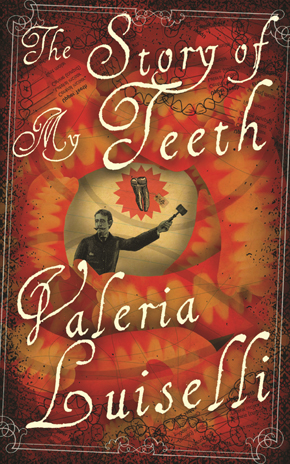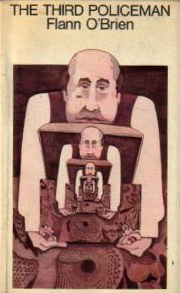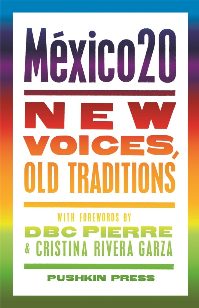Valeria Luiselli: Pearls among junk
by Mark Reynolds
“A combination of memoir, fiction, art criticism and autobiographical reflection, this is a remarkable story about stories.” Natalie Ferris
Valeria Luiselli’s second novel The Story of My Teeth is a fiercely intelligent, inventive and hilarious exploration of worth, value and creation in the worlds of art and literature. The narrator, Gustavo Sánchez Sánchez, is an enterprising auctioneer who will use his skills to sell anything – even his own teeth – at the highest possible price. To back up his calling, he is an avid collector of stories, rare treasures and plain scrap. The novel began as a fiction commission in response to the inaugural multimedia exhibition at the imposing Galería Júmex in Ecatepec, Mexico City, and was developed via interactions with workers’ reading groups at the nearby Jumex juice factory.
A few hours before we meet on the London leg of her promotional tour I receive an email from Damien Hirst’s commercial outfit Other Criteria offering limited-edition jewellery designed by the artist incorporating some of his signature motifs, with price tickets ranging from £1,750 for a silver 5-pill necklace to £25,000 for a gold charm bracelet featuring pills and a skull plated with diamonds. If the edition were to sell out, it would turn over a cool £6 million. I mention this to kick off a conversation about whether the output of artists is too frequently overvalued.
VL: It’s a tricky question to answer just like that, because ignorance on the part of the spectator may be a form of gullibility, and some artists are like brokers: always speculating on people’s ignorance. But the opposite is also true: ignorance can be a reason for thinking that something is overvalued, right? Value is something that grows slowly in our minds as spectators, and it grows as we shed ignorance and prejudice. The more we understand something, the more we understand its value. Many objects, video installations, performance pieces that resist immediate understanding may be dismissed too quickly as worthless, but if one is generous and patient as a spectator, there is always value that can be discovered.
MR: I think what irks me and a lot of people is when someone like Hirst creates something the primary purpose of which is to be sold for an elevated price, like his diamond skull For the Love of God.
Definitely. He’s very much within his rights to do that, but the actual artistic value of it is something to be thought over. In this case there seems to be nothing except a brand, a name that’s become a trademark, and a piece of work that itself is more of a consumer product than art in terms of how it’s pitched and placed in the market. Hirst has a kind of cynical way of creating surplus value in things that are then sold to a group of people – people that are perhaps particularly vulnerable to buying things because they are overpriced.
Gustavo describes his storytelling as “the only honest way of modifying the value of an object”. Who is he fooling?
He isn’t fooling anybody. I think he’s getting to the heart of something there; he’s talking precisely about what’s happening with Hirst. Just think about it. How does art travel within the art market? The medium is always storytelling. First, there’s a pitch sent, for example, to the Biennale in Berlin or Venice, that offers a convincing idea – convincing because maybe it resonates with the preoccupations of the time, maybe because it’s political enough without being too subversive, or maybe it alludes to or borrows meaning from other artists’ work. Then, let’s say the piece is accepted: for months it is talked about –travelling from the curator, to critics, to other artists. Once it reaches the space where it is shown it is, again, embedded in forms of storytelling: artist statements, wall texts, guided tours, reviews – whatever. Contemporary art is – first of all – a story. And sometimes, it’s only a story. If I could curate a biennale one day, instead of installations and pieces, there would be only wall texts and artist’s statements.
Eccentricity seems to be the trait that infallibly endows an artist’s work with added value… people in creative occupations are somehow expected to be eccentric, and the more eccentric they are, the more we value their work.”
So even if the story of the thing is based on complete lies, if someone is prepared to pay a price for it, then that’s just the market finding its value…
Artists are sophisticated impostors – like writers. Beyond the narrative they create around their work, I’m interested in the way that artists handle their particular self-narrative, the way they construct and present their public persona. Do artists (or writers) sell moral integrity? Do they sell complex political thought? No, not really. I have a feeling that they mostly strive for a degree of eccentricity. Eccentricity seems to be the trait that infallibly endows an artist’s work with added value, don’t you think? And it is, itself, a highly overvalued personal characteristic. I try to explore eccentricity and its mechanisms in The Story of My Teeth. I think people in creative occupations are somehow expected to be eccentric, and the more eccentric they are, the more we value their work.
Have you ever been tempted to play up to that?
That’s a good question. I have many fears and manias. I’ve been able to handle them as eccentricities so that they make me appear less vulnerable.
You stress in the afterword how much this is a collaborative project. Could you say a little about the evolution of the book, and in particular how it was shaped by feedback from the juice factory’s reading group?
When I say a collaboration, I do really mean it. Of course there’s the dimension of the group of workers in the factory reading the work, and I’ll go to that later, but there’s also the people who made that possible: a group of young curators from the Jumex Collection who became involved in the project. Because I was in New York, and not in Mexico, there had to be a group of people organising everything from printouts to sending me images of the spaces in which I was constructing a narrative. I’ve been to Ecatepec of course, but not for the purpose of writing this. So I needed to see the space, and I needed to see the art pieces that were being exhibited in the gallery. A group of people made all that possible: they created a sort of archive that I drew from – images, videos, emails, telephone conversations. And then of course there’s the more engaged level of collaboration, with the factory workers who got together as a reading group. They not only read my installments out loud, then commented and criticised them and ended up telling their own stories, but they went to see the exhibition and had conversations about it and the value of the work there. They had first-hand reactions to it, and they were reacting to my text at the same time. The way they spoke about the exhibition and the kinds of questions they raised about it finally turned out to be the spinal cord of the book.
I had no idea where I was going when it started, I just knew that I had to link, or if not link make the gap apparent between the world of the factory workers and the world of the gallery. So it was really a conversation in the sense that I had to listen to their own take, their own reading, to write the next installment. I could not write in a vacuum. And they started influencing me in a way I also hadn’t suspected. For example I started off with a voice I had chosen to follow, but as they read out loud, their voices started to interest me as voices that I maybe wanted to emulate – or appropriate. There was one worker in particular whose voice I really liked – his sense of humour, his scepticism, and playfulness in the way he used Spanish. I think the narrative voice ended up being very much his.
Perhaps because of its genesis, there are lengthy passages in the book that really demand to be read aloud. Are there any plans for an audiobook – either in English or in Spanish?
Yes – there is now, in the US.
The episode where Gustavo interacts with Ugo Rondinone’s video installation Where Do We Go From Here?, bickering with its embittered clowns, stuck with me long after reading. Was that one of the most fun parts to write?
It’s a book, to be honest, that I enjoyed writing. It’s not something that had happened to me before, in that way. My writing is usually much more tortured. I’m slow and careful and meticulous, I go back and forth. It doesn’t mean that I don’t find a deep joy in what I do – I wouldn’t dedicate my life to something so unthinkable. But in this case the speed of it all and the intensity of the interactions were exhilarating. I would expectantly wait for the MP3 files to come each Wednesday. It became a sort of addiction.
So what was the timeframe?
I must have started drafting something around January 2013, and it was probably finished sometime around May or June, because then in the summer I took the novel with me to a residency in Italy and worked and reworked it for months.
Was the entire novel published in the catalogue?
A version of it, a very early version with many things that are different. There are parts there that aren’t in the novel and vice-versa, but the spirit of it is there, the character, the voice is definitely already there. There aren’t many of those catalogues floating around, so I haven’t re-read it.
One of the main collaborations, of course, is with Christina MacSweeney, who you always work very closely with on a translation. This time she ended up having a chapter to herself too. How did that come about?
The collaboration started even earlier with her this time. Christina was doing an almost simultaneous translation of what I was writing for the workers, because the Jumex wanted a bilingual catalogue and we were under certain time pressure. I was sending her the workers’ readings and reactions, so that she could be part of the whole writing process. She was very much engaged in that exchange too, and had her own ideas about it. The first versions of the bilingual manuscript were published in the catalogue. Later, I reworked it in Spanish for a long time, and it was published in Spanish, and then we worked on the English together very closely too. Christina came to New York in early 2014, and the timing was perfect because at that point we had the revised English version, and we met a few times in a café and read the whole thing out loud, making annotations. My previous books are not oral – my narrators were always someone thinking, rather than someone speaking, right? But this is a book that has to be heard, the reader has to be able to hear the voice. And we talked about that a lot: how do we do this in English?

The Third Policeman first edition. MacGibbon & Kee, London, 1967. Wikimedia Commons
The tone of the narrator’s voice is so characteristically Mexican, and from a particular social class. The initial voice was that of my uncle, who works a trader/seller at La Central de Abasto, the biggest market in Mexico City, where he trades car parts for ham or whatever, and he always tells really funny stories about how he gets things sold. He’s very streetwise. So there was a very particular voice. We decided to read Flann O’Brien, particularly The Third Policeman, and thought of the voice in English in relation to that, and she really worked on that once we had discussed it, and she did a wonderful job, and then I took her translation and rewrote a lot on top of that.
You’d have to ask her exactly how she came up with the insane and fantastic idea that became her chapter, but I think it had to do a little bit with her research process for the novel. She was curious, maybe at times frustrated, I don’t know, with the amount of proper names that popped up, so she looked them all up, she researched all of them, and I guess she made a timeline for herself – people, names, what they did. She told me she was doing this and she sent me just a few examples and I loved it, the way she writes the tiny biographies that are kind of random in the type of information that they include. I asked my US publishers if they would be interested in doing something with that, and they thought maybe a chapbook to go with the novel that would circulate independently, but when they read it they said no, it should be in the novel, and I wanted it in the novel too, so that’s what we did.
You’ve spoken before about each translation becoming a completely new work. In what ways does the English version differ from the Spanish?
I never know exactly because for me as a process it’s chromatic in the way it changes, changes, changes until one is different from the other. Some names changed, I guess. Siddartha, the narrator’s son, is called Ratzinger in Spanish, so it had a more Catholic bias. I like doing that in my novels – I change something relatively small, and watch the chain reaction of changes it produces. Originally, in Faces in the Crowd, the narrators’ husband was a screenwriter and then in English he was an architect. By changing that there was a whole world of things in the novel, a whole net of relations that changed. Even just at a metaphorical level, things that were just loose bits somehow became part of a new network of meanings because of that change.
When Gustavo is discussing his relations, such as Juan Pablo Sánchez Sartre, Roberto Sánchez Walser and so on – it’s interesting how the simple mechanism of tagging these literary giants with his own family name makes him somehow belong to the same canon.
Or the reverse, right? He kind of brings these writers down from the pantheon and into everyday discussion. I think that played an important role in the first readings of the novel, done by the workers. It was all about thinking of processes in the art world and emulating them or reversing them. So if we were thinking about value in the art objects that were being exhibited in the gallery, by thinking about them and discussing them in the factory, they were being decontextualised – and their aura somehow dimmed. Then I thought it would be really trite and commonplace to simply describe that process literally, but how could I do that with narrative? So playing with big names like Walser and Sartre and bringing them out of the gallery and into the factory, so to speak, was a way to reflect the process that was going on with the workers themselves.
 Can you say a little about your story ‘Because Night Has Fallen and the Barbarians Have Not Come’ in the Mexico20 anthology of writers under 40?
Can you say a little about your story ‘Because Night Has Fallen and the Barbarians Have Not Come’ in the Mexico20 anthology of writers under 40?
It’s another example of my multilingual mess and my fruitful collaborations with Christina. It’s a story that I originally wrote and is completely different in Spanish, published as ‘Tiresias’. But now it’s a very different story. Christina translated it directly from Spanish into English, but I didn’t like it from the beginning in Spanish, so when I had the English version I completely changed it. So now I have a version in English that I like, and now I’m probably going to have to rewrite it in Spanish – and I know it will change completely, again.
You and Christina introduced me to the short stories of Guadalupe Nettel, who has since been published in English. She missed the cut for this anthology because she’s a little over forty. Ignoring the age barrier, which other Mexican writers would you particularly recommend?
Guadalupe is one of my favourite contemporary writers, as are Samanta Schweblin (from Argentina) and Alejandro Zambra (from Chile). Dismissing the age barrier, from Mexico I really like Josefina Vicens, a writer published in the 50s. She only has two books, one is called The Empty Book. It was translated into English by a small academic press and I don’t know if the translation’s good or not. I always tell editors about her, but they never listen to my recommendations! She was Juan Rulfo’s closest friend, and highly admired by him, but she was living in a generation when women were widely ignored, I guess even minimised. She was referred to as La Peque, ‘the little one’. Another writer from that period I find interesting is Inés Arredondo – she has very good short stories. Then there’s Sergio Pitol, who I think is one of the best writers alive in Spanish, and who’s just out in English for the first time now, from Deep Vellum. He’s fascinating. He translated Conrad, Gombrowicz and a whole series of very interesting writers into Spanish when he was a diplomat around several Eastern European countries. His Spanish is strange – deeply contaminated by his ‘tasks as a translator’ in the best possible way.
When we met in 2012 as Faces in the Crowd came out, you were juggling with ideas for an autofiction combining elements of 1990s South Africa and the illuminated writings of Pedro de Portugal. Is that still on your mind?
Let’s say what has happened with that is I’ve learned not to speak of books until they’re written.
So what else might be on the horizon?
I’m writing something now, but this time I’m not going to talk about it. The working title is Memphis.
Are you a collector of objects as well as ideas, and do you have any particular prized possessions?
I do collect things. Some of them are more embarrassing than others. I pick up all the coins that I see, for example, which is pretty normal, right? I’m superstitious about it, and I put them in my shoe because someone taught me that once. One time I was walking with my husband and my foot was kind of hurting so I took off my shoe just to see and I must have had ten coins inside. He seemed concerned, but I reassured him. Now my daughter does the same thing, and I’m a little concerned. I also collect cards: I’ve been finding playing cards in the street since I was about fourteen years old, and I take them as a token of good luck. I have most of them in a box, others in my wallet with me. As for prized possessions, I have some first editions like the diaries of Joseph Conrad, and my bicycle – but I don’t get too attached to bikes anymore because they get stolen every few months.
Gustavo lives in a fairy-tale castle on Calle Disneylandia. Does that street really exist?
I promise you, it does.
So what is it? What’s the story?
Calle Disneylandia is in a colonia or neighbourhood where there are streets with names of cities in the US: Las Vegas, New York, Washington… and, suddenly, there’s Disneylandia. It’s an involuntary eccentricity of the space. Mexico City’s street names are memorable. I have a couple of friends, the brilliant writers Luigi Amara and Vivian Abenshushan, who live in the corner of Progreso and Prosperidad (Progress and Prosperity). I once used to live in the corner of Revolución and José Martí. There’s a street called Obrero Mundial (World Worker), another one called Ahorro Postal (Postal Savings), one in Ecatepec called Camino del Éxito (Road to Success), and another street in southern Mexico City called Transfiguración (Transfiguration), which is fittingly parallel to a street called Jesus Christ. There are also streets that are certainly bad omens for their residents, like Amargura (Bitterness), Calvario (Calvary), or Ingenieros Militares (Military Engineers). There’s a street I once found in Google called Calle Aquí Vivo, which literally means ‘I Live Here Street’.
As for the picture of the castle in the book – it’s not actually on Disneylandia, but in a small town in the state of Oaxaca, in southern Mexico. The story of that castle is that there was a man in that little tiny town who won the lottery and what he did with the money was to buy rickshaws and build this castle-house. Can you imagine? He must have been a local version of Gustavo Sánchez. Before it was published I went to read the first chapter of The Story of My Teeth at a high school up in the mountains, a small rural community. I read to the students and we had a really wonderful discussion afterwards. Before leaving, I asked them about that castle in the neighbouring town, and they told me the story. I promised them I would somehow put it in the novel. So I kept my promise.
 Valeria Luiselli was born in Mexico City in 1983 and has lived in Costa Rica, Korea, South Africa, India, Spain and the US. Her novels and essays have been widely translated and her work has been published in magazines and newspapers including El País, the New Yorker, Granta and McSweeney’s. Her first novel Faces in the Crowd, the essay collection Sidewalks and The Story of My Teeth are published in the UK by Granta and in the US by Coffee House Press. Read more.
Valeria Luiselli was born in Mexico City in 1983 and has lived in Costa Rica, Korea, South Africa, India, Spain and the US. Her novels and essays have been widely translated and her work has been published in magazines and newspapers including El País, the New Yorker, Granta and McSweeney’s. Her first novel Faces in the Crowd, the essay collection Sidewalks and The Story of My Teeth are published in the UK by Granta and in the US by Coffee House Press. Read more.
@ValeriaLuiselli
Author portrait © Alfredo Pelcastre
Mark Reynolds is a freelance editor and writer, and a founding editor of Bookanista.

